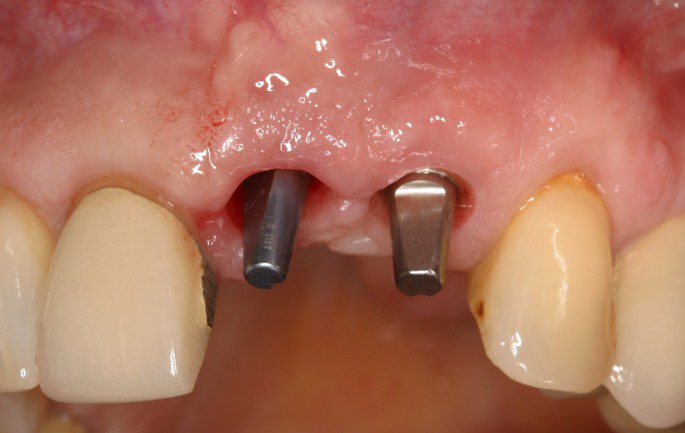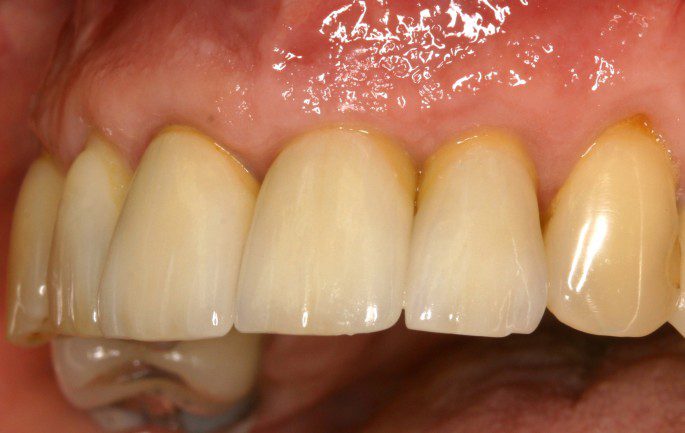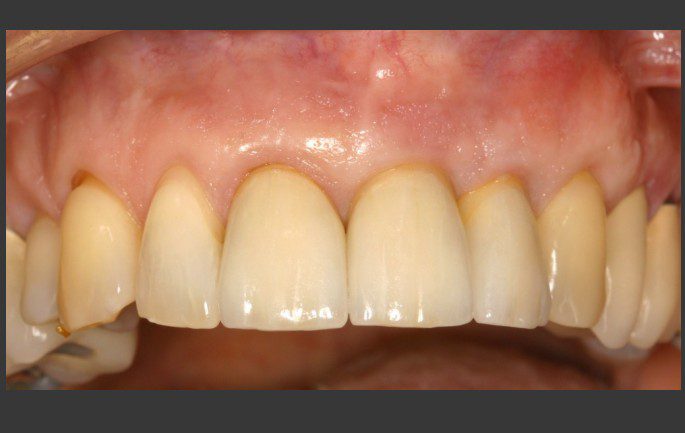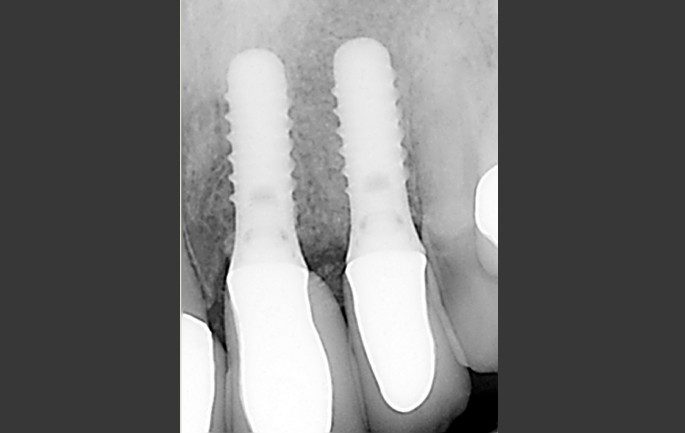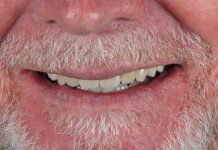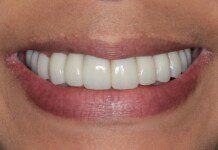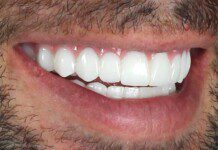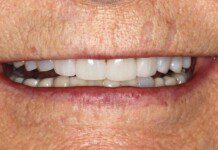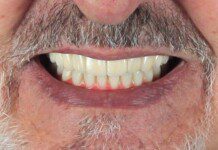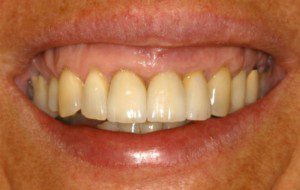
1 of 13
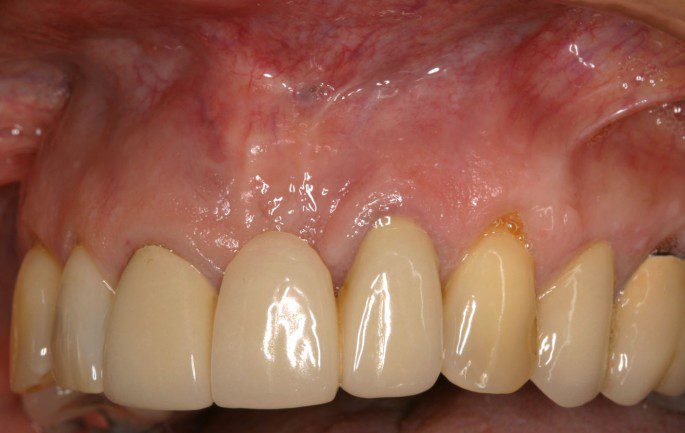
This patient had a very 15 year old bridge. It had served her well but there was an abscess (dental infection at the tip of the left abutment tooth). Based on our clinical examination there was bone resorption (bone loss due to the missing tooth) and dental implants were not possible without a bone graft.
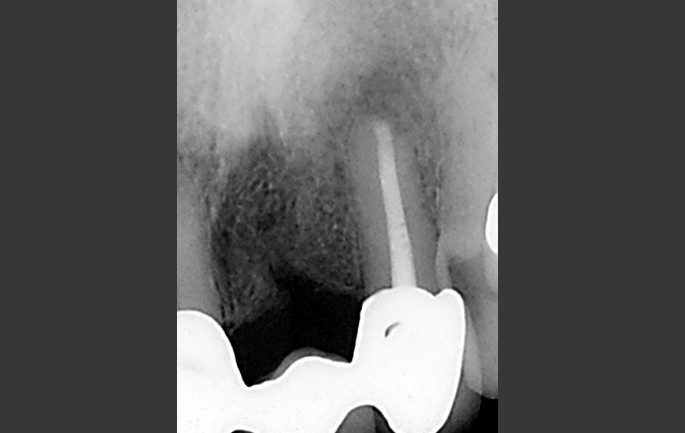
Periapical x-ray of the left lateral incisor (tooth #10). Note the diffuse black area at the tip of the root. This is a dental abscess. In most cases, an infection at the time of extraction prevents us from placing the implant the same day. In this case, we also had a bone deficiency at the area of the missing tooth (#9). Both problems prevent implant placement on the day of extraction. Instead, the bone graft was completed on the day of the extraction.
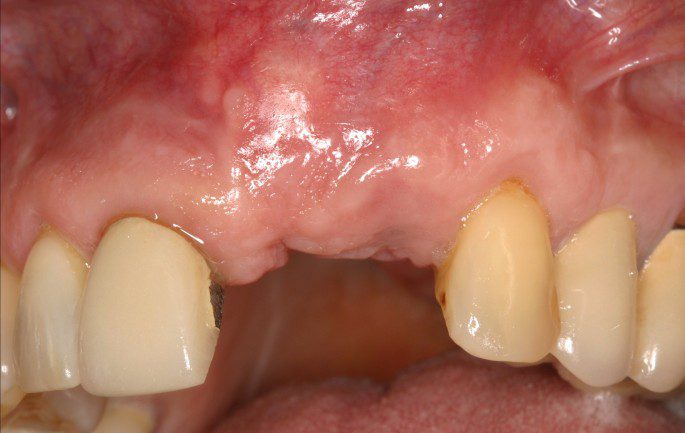
Six months after bone grafting. Note, the fullness of the bone and gums where the teeth are missing. This is the goal of dental bone grafting. Building new, healthy bone volume gives us the opportunity to place implants for many patients who, otherwise could not have them. Most bone grafts require six months of healing. It takes approximately six months for human bone cells to convert bone graft material to the patient's own bone. The Dental Implant Center doctors use two different techniques (ridge expansion and ridge splitting) to avoid bone grafts whenever possible. When these techniques won't work, bone grafting is the solution.
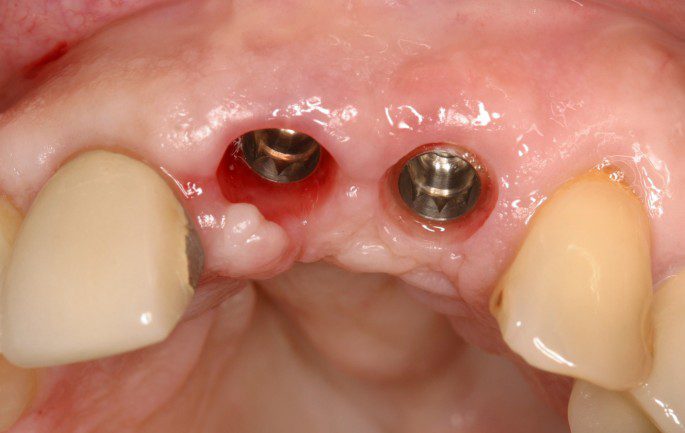
Implants placed. Again, where it may not be readily evident the positions of the implants is EXACT. For the best outcomes, implants should be placed directly under the tooth being restored.
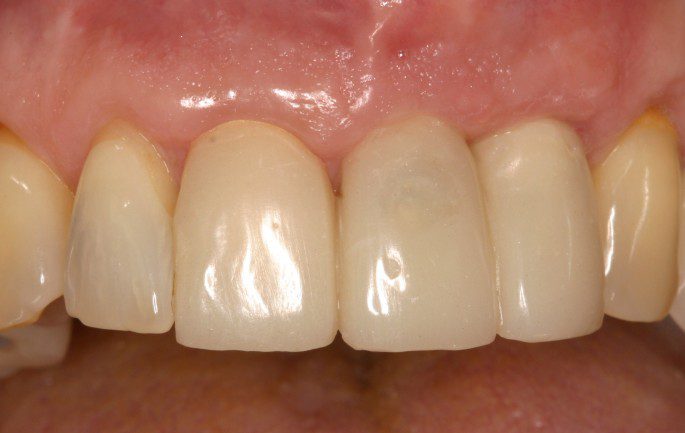
Temporary crowns are fabricated to shape the tissues and give the patient the benefit of the implants after waiting almost nine months for the bone grafts and implants to heal. Temporary crowns also provide valuable insight to size, shape and shade. This information is conveyed to the lab via pictures and models.
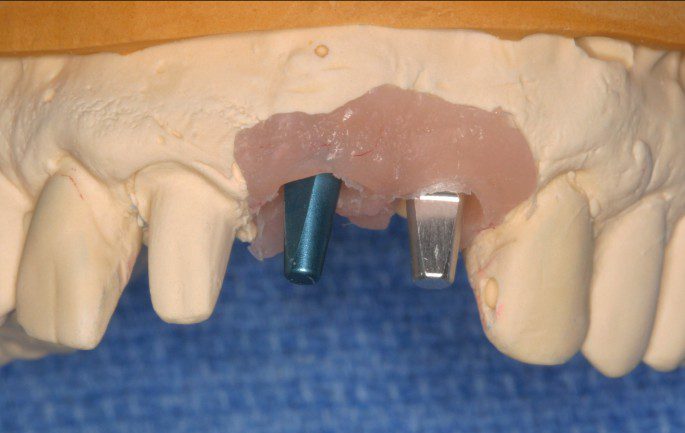
The master model used by the laboratory to fabricate the implant crowns. The pink material is used to replicate the soft tissue contours in the patient's mouth.
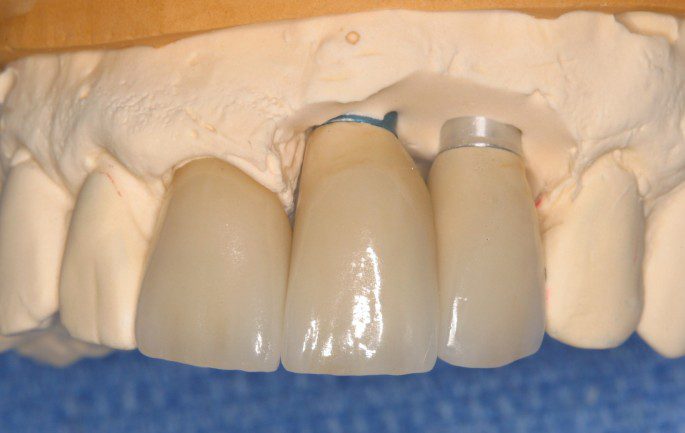
Implant crowns on master model. Note, pink tissue replica is removed to show the margins of the crowns that will not show in mouth.
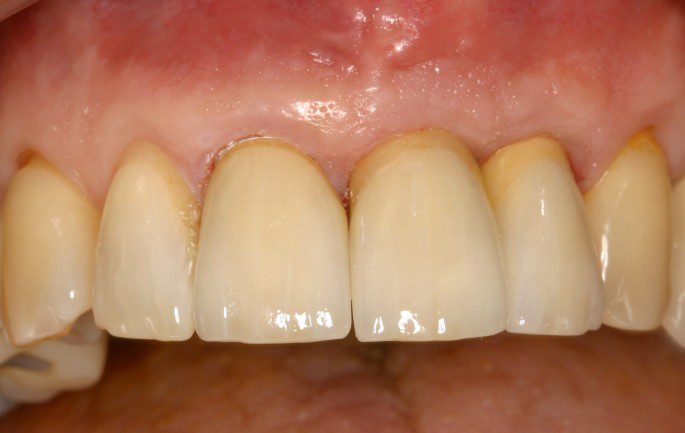
Implant crowns in the mouth. This result is nearly flawless. The implant crowns and the natural tooth crown blend seamlessly with the patient's natural teeth. If it is readily evident that your tooth or implant crowns do not match your teeth, the dentist didn't use a high quality lab or didn't care to get it right.
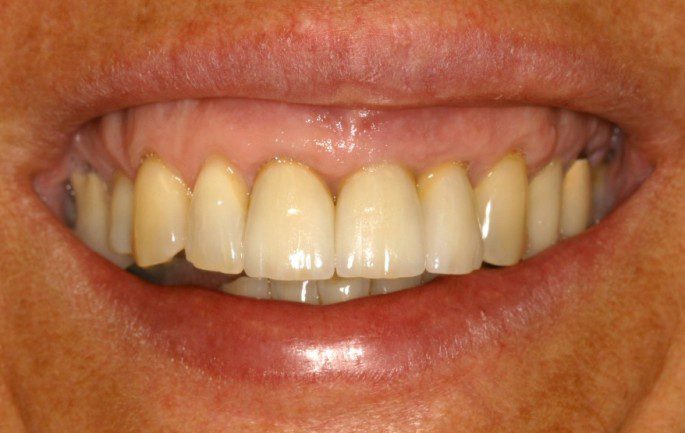
Smile view. This patient has a gummy smile (vertical maxillary excess- VME). Gummy smiles are genetic. It is simply a matter of the position of the upper jaw being longer or the upper lip being shorter than the socially accepted length. Jaw surgery can correct this but most people decline that solution.

